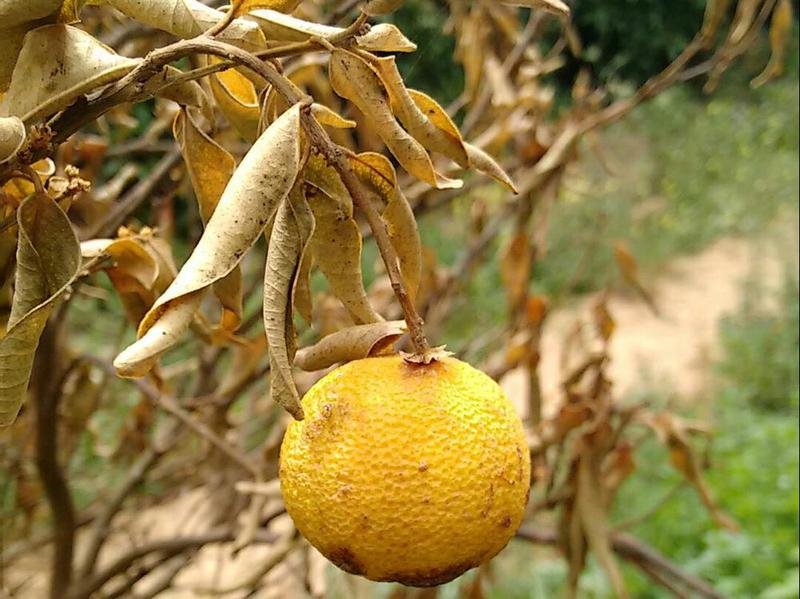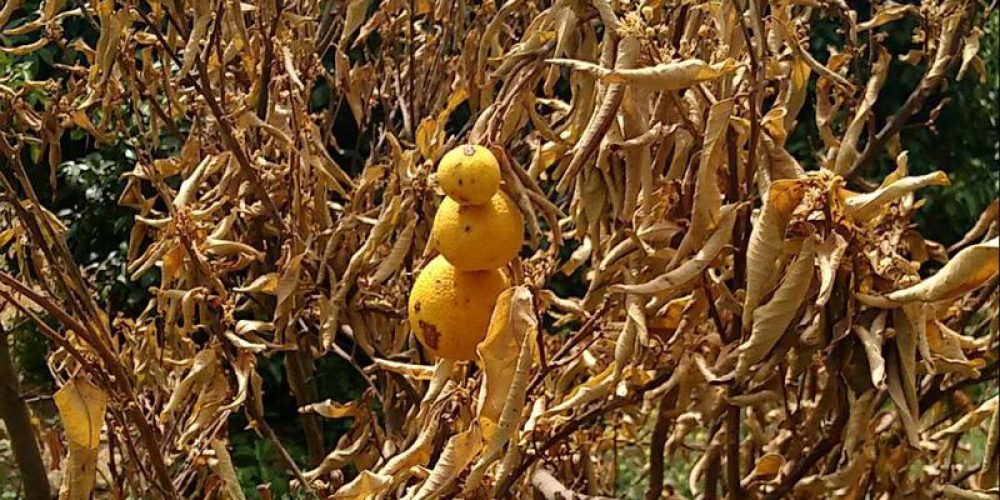Table of contents of the article
ToggleBlight is a fungal disease that affects lemon plants and causes a deterioration in the overall health of the plant. This article from the “WORLD OF PLANTS” website provides an explanation of the symptoms of blight on lemon plants and methods of prevention and control.
Causes of blight on lemon plants
- Name of the disease: Blight on lemon plant
- Scientific name: Pseudomonas syringae
- Type of disease: Bacterial
- Disease family: Pseudomonas
Lemon plants suffer from blight due to the presence of bacteria Pseudomonas syringaeThese bacteria live on the surface of the leaves and become pathogenic in long-term, humid weather conditions. The damage is more severe on the side exposed to winter winds.
Symptoms of blight on lemon plants
Symptoms of infection appear in the form of black spots in the leaf petals and advance to the neck of the leaf, leading to the leaves withering and wrinkling, but they remain attached to the branches and fall in the case of severe infection. Entire branches may also die, and the infection can lead to the appearance of small black spots on the fruit.
The development cycle of blight on lemon plants
These bacteria enter the plant through leaf pores, and wounds on the branches caused by thorn punctures, strong winds, or insect injuries can help spread the bacteria within the plant.
Suitable conditions for the spread of blight on lemon plants
Wet, cold, and windy conditions during winter and spring greatly favor the development and spread of blight bacteria. Pseudomonas syringae In the ice, which means that it lives under harsh weather conditions and temperatures below zero degrees Celsius.

Losses resulting from the spread of blight on lemon plants
Blight bacteria attack the immature leaves of lemon plants, which affects the health of the plant in general. As the infection intensifies and the plant continues to be exposed to frost and rain, the size and quality of the fruits decrease, and the plant may die in some cases.
Controlling blight on lemon plants
- Adding iron chloride compounds to hydroxide granules at the beginning of winter and before the field is exposed to frost.
- Apply copper compounds to the plant correctly.
- Planting windbreaks.
Preventive measures for blight on lemon plants
- Use dense varieties with relatively few thorns to prevent wind injury.
- Pruning dead or diseased branches in the spring after the rainy period to limit the spread of the disease.
- Good fertilization of the plant helps in resisting bacteria.
- Sterilize agricultural tools before use.
In conclusion, we would like to note that we, at the world of plants website, offer you all the necessary services in the world of plants, we provide all farmers and those interested in plants with three main services::-
- Artificial intelligence consulting service to help you identify diseases that affect plants and how to deal with them.
- Blog about plants, plant diseases and care of various crops ... You are currently browsing one of her articles right now.
- An application that provides agricultural consultations to clients, as well as a service for imaging diseases and knowing their treatment for free – Click to download the Android version from Google Play Store، Click to download the IOS version from the Apple App Store.




